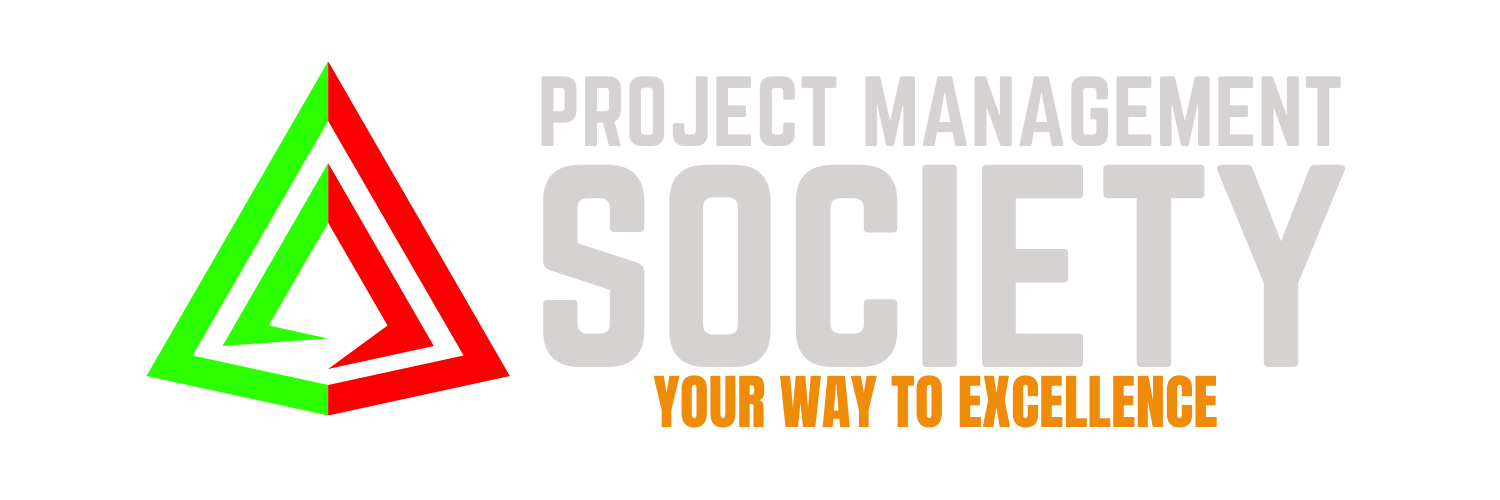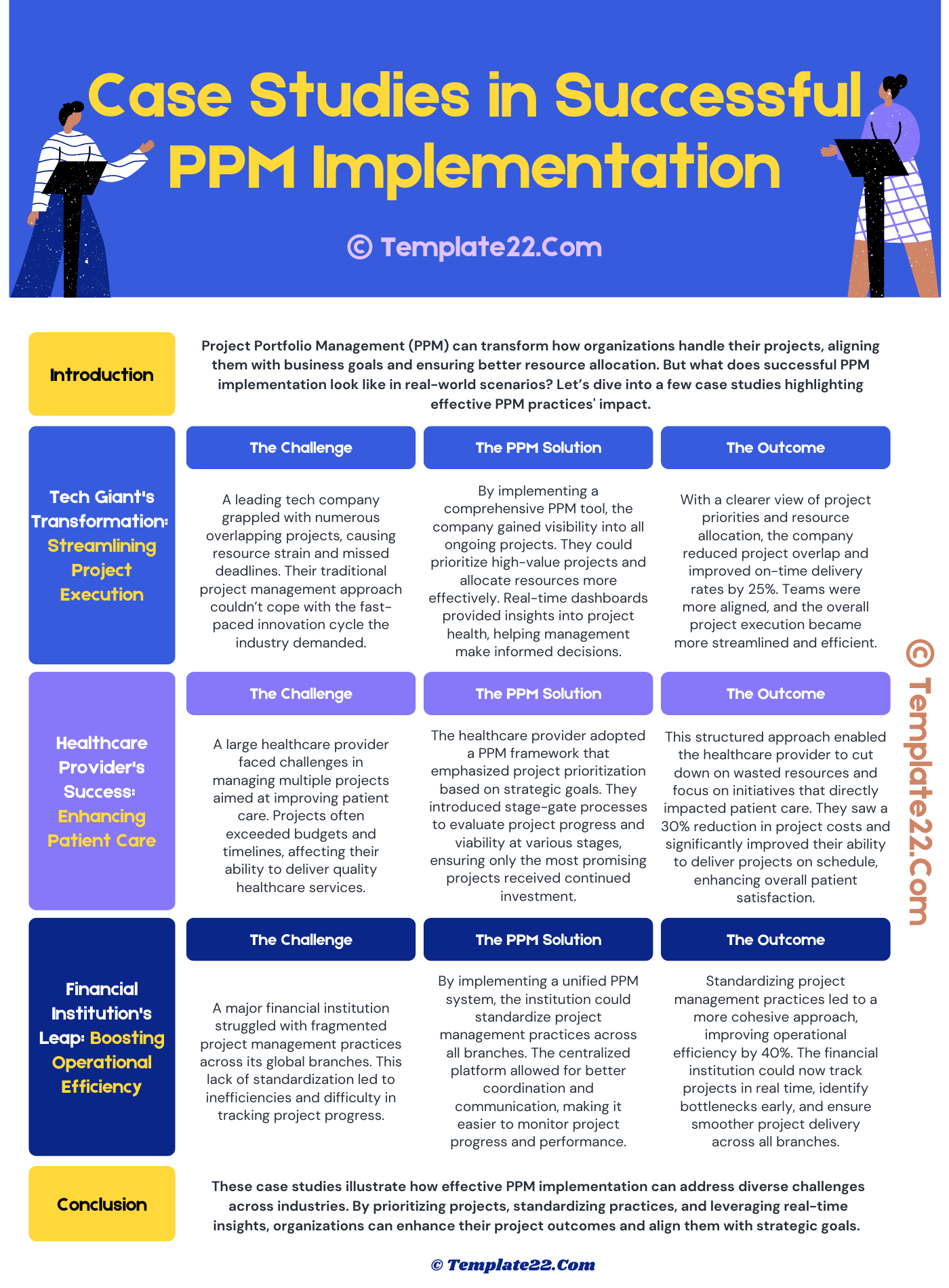 Project Portfolio Management (PPM) can transform how organizations handle their projects, aligning them with business goals and ensuring better resource allocation. But what does Case Studies in Successful PPM Implementation look like in real-world scenarios? Let’s dive into a few case studies highlighting effective PPM practices’ impact.
Project Portfolio Management (PPM) can transform how organizations handle their projects, aligning them with business goals and ensuring better resource allocation. But what does Case Studies in Successful PPM Implementation look like in real-world scenarios? Let’s dive into a few case studies highlighting effective PPM practices’ impact.
Tech Giant’s Transformation: Streamlining Project Execution
The Challenge
A leading tech company grappled with numerous overlapping projects, causing resource strain and missed deadlines. Their traditional project management approach couldn’t cope with the fast-paced innovation cycle the industry demanded.
The PPM Solution
By implementing a comprehensive PPM tool, the company gained visibility into all ongoing projects. They could prioritize high-value projects and allocate resources more effectively. Real-time dashboards provided insights into project health, helping management make informed decisions.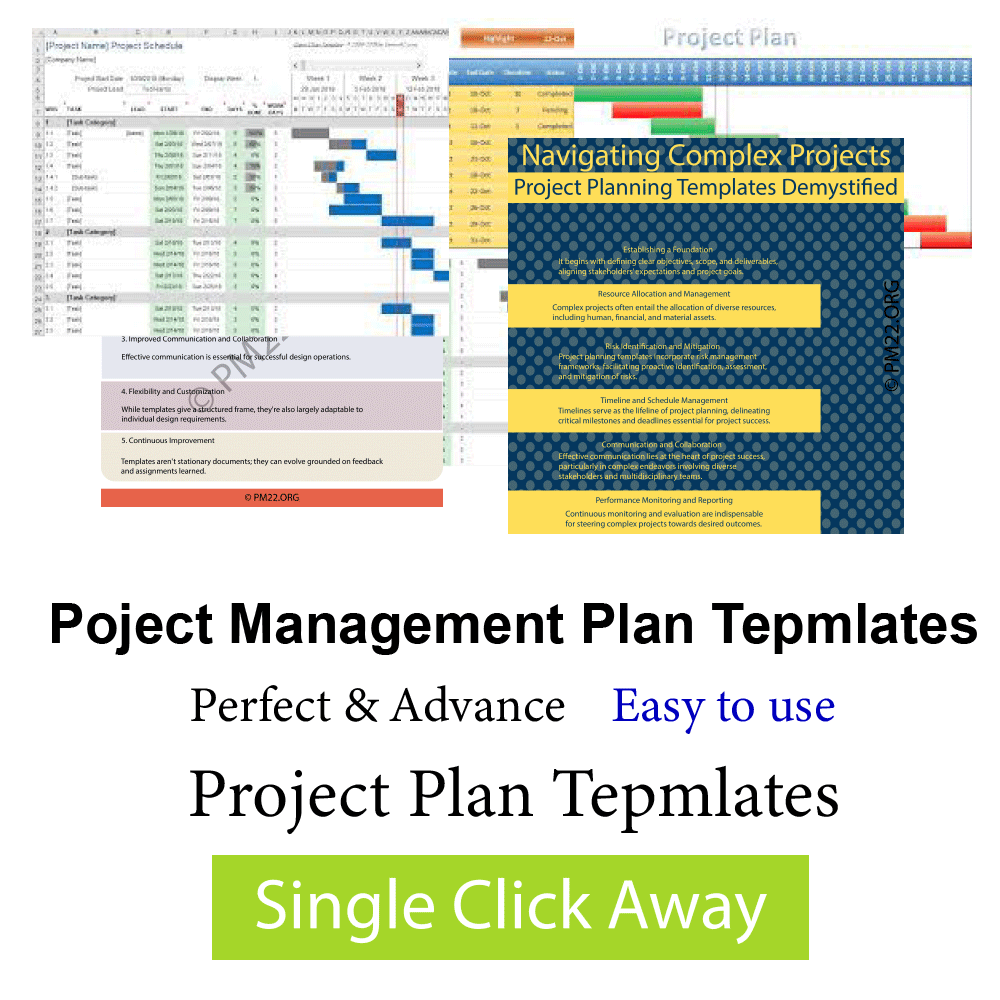
The Outcome
With a clearer view of project priorities and resource allocation, the company reduced project overlap and improved on-time delivery rates by 25%. Teams were more aligned, and the overall project execution became more streamlined and efficient.
Healthcare Provider’s Success: Enhancing Patient Care
The Challenge
A large healthcare provider faced challenges in managing multiple projects aimed at improving patient care. Projects often exceeded budgets and timelines, affecting their ability to deliver quality healthcare services.
The PPM Solution
The healthcare provider adopted a PPM framework that emphasized project prioritization based on strategic goals. They introduced stage-gate processes to evaluate project progress and viability at various stages, ensuring only the most promising projects received continued investment.
CLICK HERE TO DOWNLOAD 300+ PROJECT MANAGEMENT TEMPLATES & DOCUMENTS IN EXCEL
The Outcome
This structured approach enabled the healthcare provider to cut down on wasted resources and focus on initiatives that directly impacted patient care. They saw a 30% reduction in project costs and significantly improved their ability to deliver projects on schedule, enhancing overall patient satisfaction.
Financial Institution’s Leap: Boosting Operational Efficiency
The Challenge
A major financial institution struggled with fragmented project management practices across its global branches. This lack of standardization led to inefficiencies and difficulty in tracking project progress.
The PPM Solution
By implementing a unified PPM system, the institution could standardize project management practices across all branches. The centralized platform allowed for better coordination and communication, making it easier to monitor project progress and performance.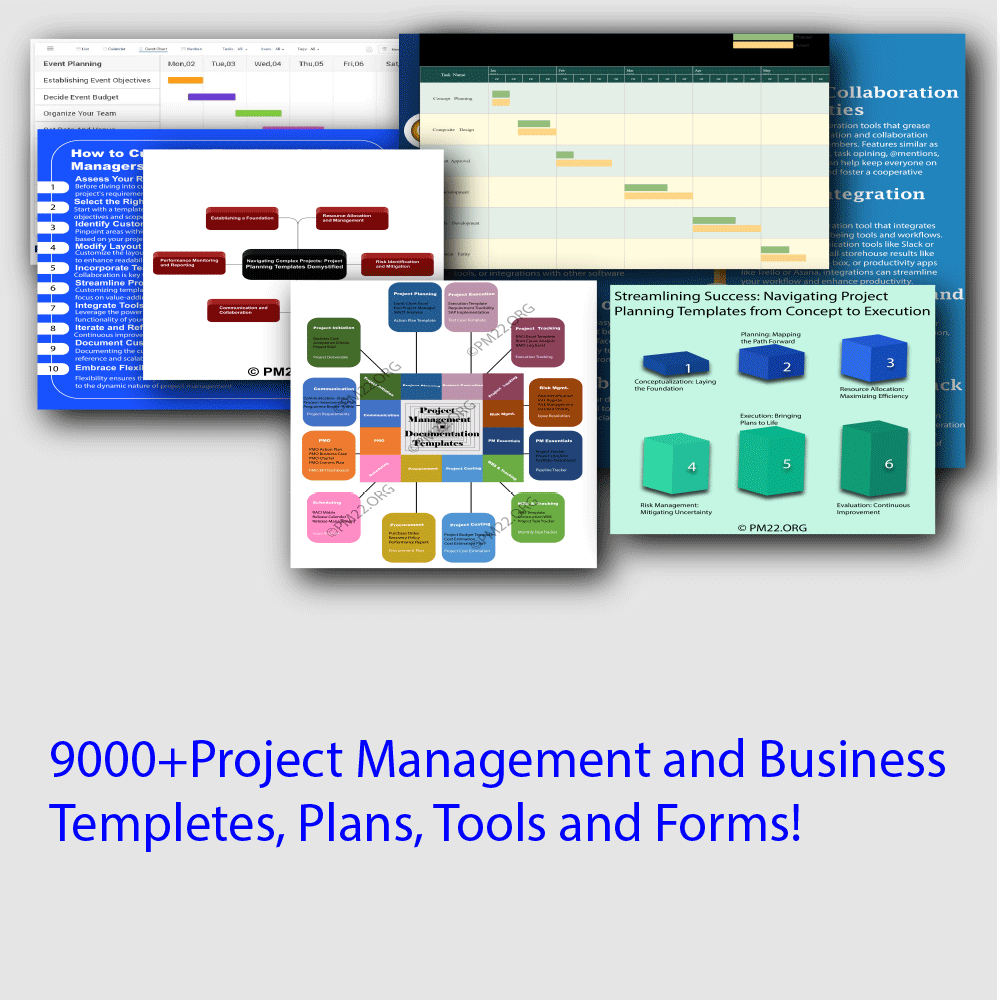
The Outcome
Standardizing project management practices led to a more cohesive approach, improving operational efficiency by 40%. The financial institution could now track projects in real time, identify bottlenecks early, and ensure smoother project delivery across all branches.
Manufacturing Leader’s Achievement: Driving Innovation
The Challenge
A leading manufacturing company aimed to boost innovation while maintaining production efficiency. Managing R&D projects alongside operational projects proved challenging without a clear framework.
The PPM Solution
The company integrated a PPM system that allowed them to balance R&D and operational projects effectively. They used portfolio analysis to evaluate project alignment with their innovation goals and production capabilities.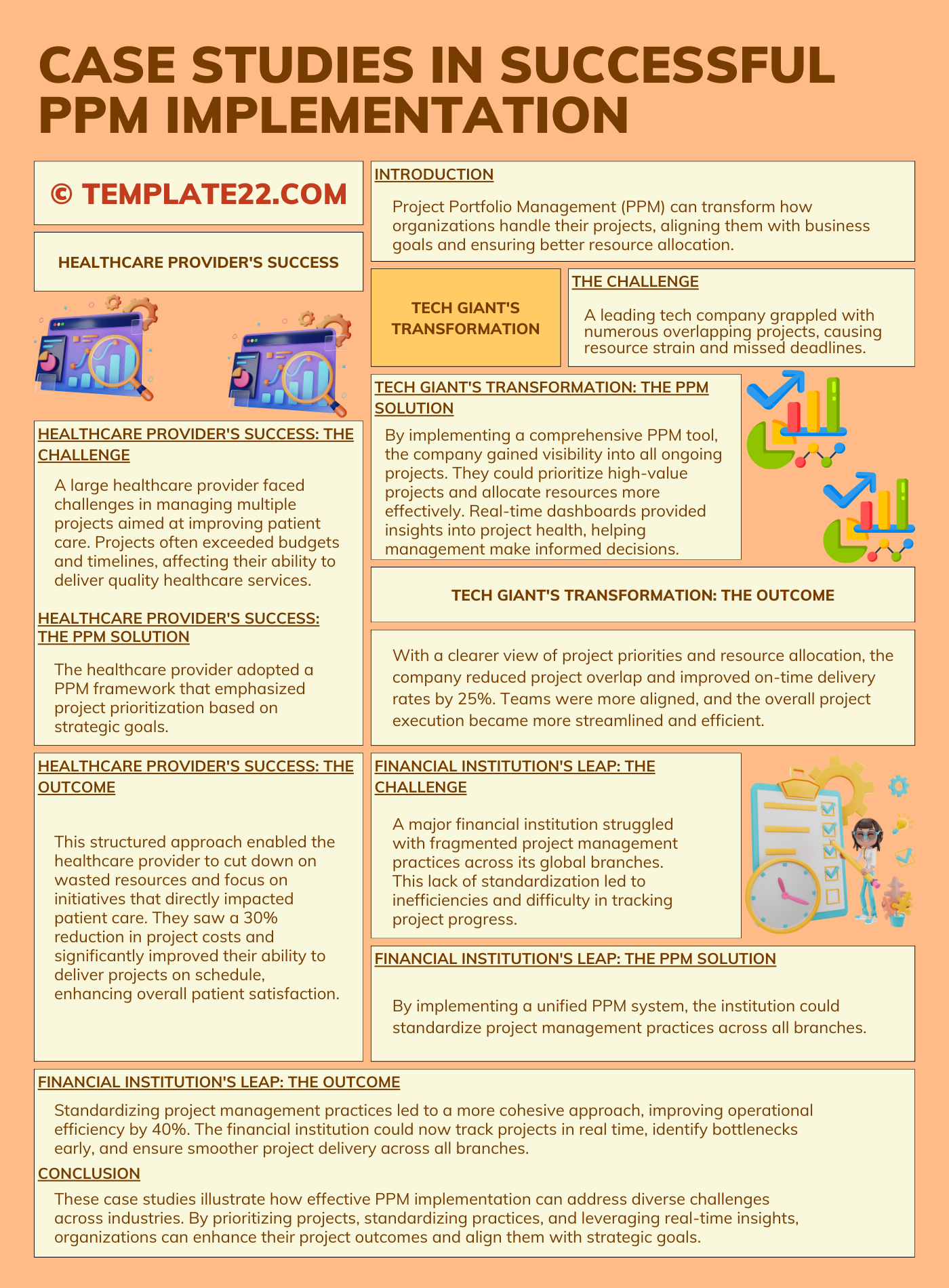
The Outcome
The manufacturing leader successfully balanced innovation with efficiency, resulting in a 20% increase in new product introductions. Their ability to manage both types of projects concurrently improved, driving overall business growth and competitiveness.
Retail Chain’s Advantage: Optimizing Inventory Management
The Challenge
A large retail chain faced difficulties in managing projects related to inventory optimization. Frequent stockouts and overstock situations impacted their sales and customer satisfaction.
The PPM Solution
By adopting a PPM approach, the retail chain could better coordinate its inventory management projects. They used predictive analytics within their PPM tool to forecast demand more accurately and align inventory levels accordingly.
CLICK HERE TO DOWNLOAD 300+ PROJECT MANAGEMENT TEMPLATES & DOCUMENTS IN EXCEL
The Outcome
With improved project coordination and demand forecasting, the retail chain reduced stockouts by 35% and overstock situations by 25%. This optimization led to higher sales and enhanced customer satisfaction, proving the effectiveness of their PPM implementation.
Conclusion
These case studies illustrate how Case Studies in Successful PPM Implementation can address diverse challenges across industries. By prioritizing projects, standardizing practices, and leveraging real-time insights, organizations can enhance their project outcomes and align them with strategic goals. Whether it’s streamlining project execution, enhancing patient care, boosting operational efficiency, driving innovation, or optimizing inventory management, PPM proves to be a powerful tool for achieving long-term success.
